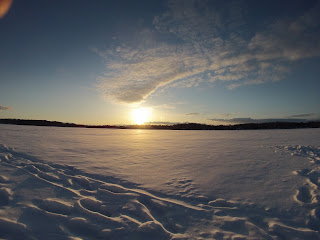Driving over the Llano Estacado this morning the sky is
heavy with storm clouds, lighting making landfall to the north. The approaching grey carries with it a sense
of wonder and concomitant danger and as I watch the precipitation fall over the
distant plains, the cliffs of the Caprock Escarpment approaching rapidly, the
pressures of my day begin to find themselves lost in the serenity of West
Texas. It is a land passed over by many, labeled as a territory of desolation
and left for the vultures, the scavengers. But beyond the subtle and
overwhelming beauty of this place I have come to know, in the hills filled with
silver bluestem, mesquite and sunflowers, a small and resilient bird makes it
home. It is a species that like so many other upland birds has a siren song all
to its own, and to Texans and the hunters that reside here, the call is
irresistible. It is the nocturne of a gamebird, the melody of a survivor, it is
the serenade of the northern bobwhite quail.
Before settling into my new home my upland pursuits had
taken me far and wide, chasing chukar and grouse, pheasants and turkeys, but
overlooked for so many years were one of the most agile, explosive, and dynamic
birds of them all, the quail. The northern bobwhite, with streaks of white and
orange paint dressing their heads, thrive all the way from New England to
Texas. They look like mobile grenades as they forage in and about the shrubs and
bunchgrasses, stout and rotund on first appearance. But when a covey decides to
flush they thrust out like tiny missiles accelerating across the evening
horizon, almost as if Houston had just given mission control the go to launch;
their jettison is spectacular.
From a distance they appear almost as a muted brown but even
a moment’s further inspection reveals shades of chestnut, maroon, mahogany, and
slate, all splashed about their wings and bodies. As they lift into the sky a
brief interlude of crisscrossing is followed by flights low and hard, straight
and narrow. Their feet, concealed in the rolling dust, harken back to a
prehistoric era when only the most tenacious of species emerged from Earth’s evolution.
Their long claws and scaled feet truly reflect and are the embodiment of a life
on the surface. In the spring, when these birds shed their clandestine image
and begin calling, they can be heard well into the day, a quick “bob-white” ringing
out from the grasses. Who knew so much could come from such a modest package?
And while quail far and wide have claim to their own homes,
the forests of northern Florida, the agricultural lands of the Mid-West, Texan
quail thrive where many see a landscape devoid of life. But to look closer at
the rangeland we have, to dig deeper into its ostensible mirage, those same
people might just find something they never expected. Amongst the native seeds
produced by this land and eaten by quail the diversity, color, size, and shape
are something to marvel at. There are varieties with names such as western
ragweed, croton, partridge pea, Illinois bundleflower, black-eyed susan,
Maximilan sunflower, and broom snakeweed; all staples of a quail’s diet out
here in no-man’s land. They are a survivalist in a sea of brown, a native of
West Texas, where all the amenities necessary for life are provided by what is
proudly known as the Southern Rolling Plains.
But more than the birds themselves it is the culture that
draws you in. Texans are obsessed with their bobwhites and the money and
resources put into their conservation and protection is a testament to that
fact. From pointing dogs to bumper stickers, local chapters to lone hunters,
the atmosphere is thick with quail. When you come here you instantaneously feel
the enthusiasm, the energy, the excitement. Men and women, young and old, speak
of quail almost as if they were long lost relatives, a relationship that has
been built over generations and which is renewed each fall. The folklore has
had a most infectious impact on me.
To this end Farley and I, now with enough time in this state
to claim residency, have long awaited our chance to push out into the
grasslands and try out luck, to wade through the morning shrubs, the morning
dew soaking our legs. I have even had the pleasure of working my dog on a few
private ranches this past winter and to see the his tail once again go straight
and stiff, wagging with determined conviction, was more than this hunter’s
heart could desire. He once again had the scent, the smell that is perhaps the
only fragrance that can immediately take his mind off of the jacks zigzagging
his path and focus him back onto a singular task.
I didn't know what to expect when I arrived here but finding
a love for quail was certainly unexpected. Finding a love for West Texas was as
well. Public lands are scarce in this part of the country, making hunting that
much more difficult but I have never been one to shy away from a visit with a
landowner. More often than not you meet a rancher who has stories to tell,
quail hunts to reminisce about, and a warm handshake if you are willing to spend
the time. And in the end, there is really no way to better learn about a
species you want to hunt or a culture you wish to know than to get it straight from
the horse’s mouth. With quail loved by so many, there are stories and anecdotes
to keep you smiling for days. This fall, I’m ready to make a few of my own.
West Texas:
Early season quail nest:
The northern bobwhite:
The ubiquitous Texas windmill...and Farley:







.jpg)




















